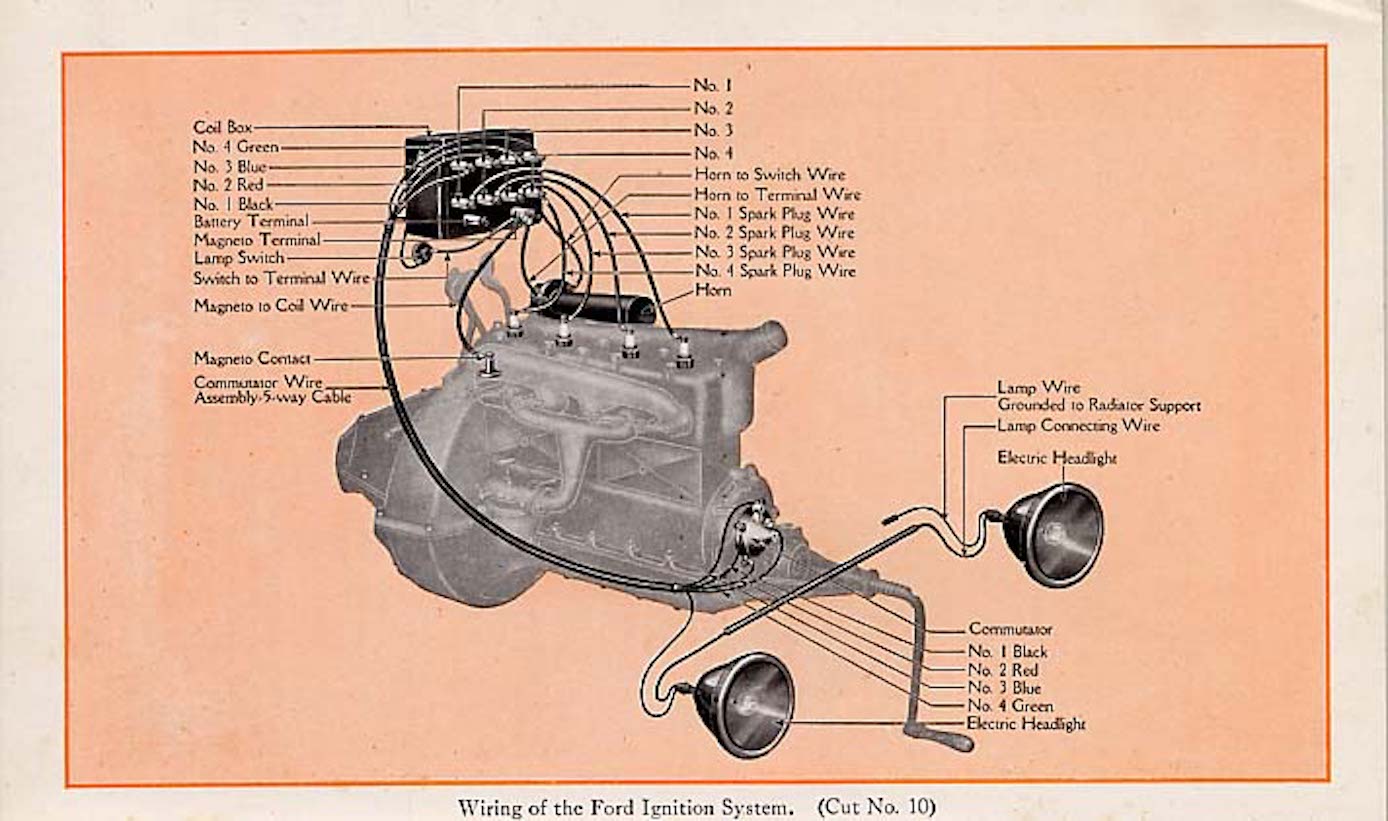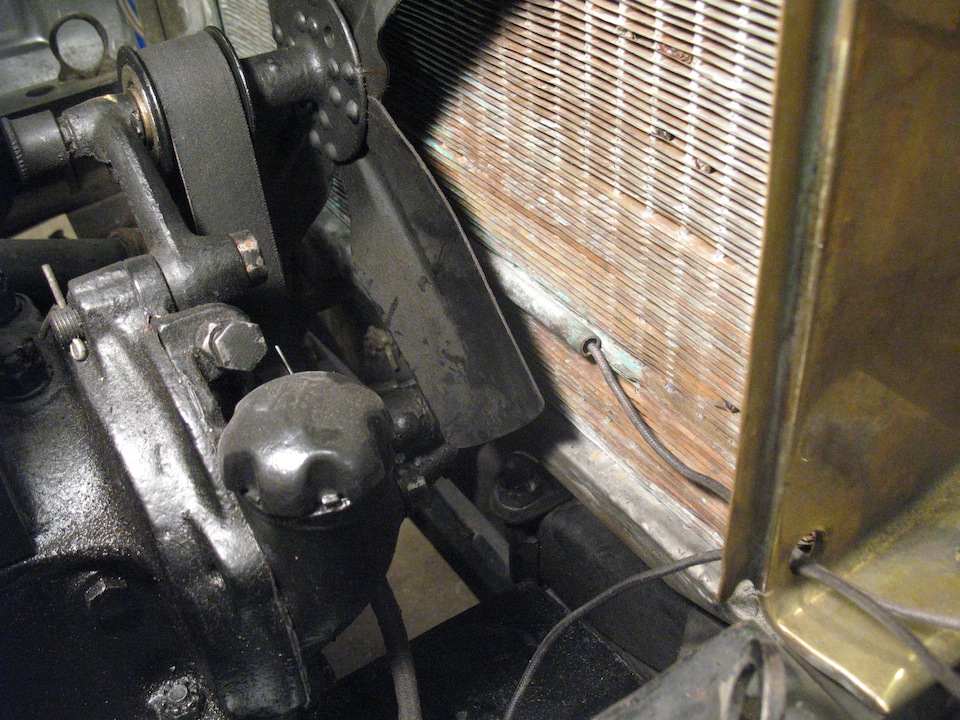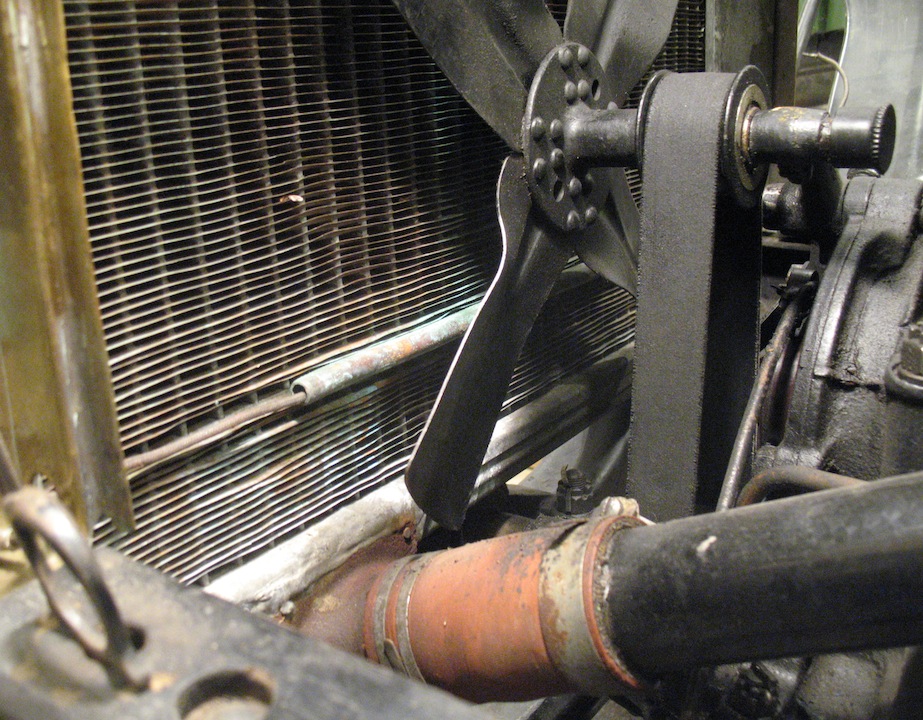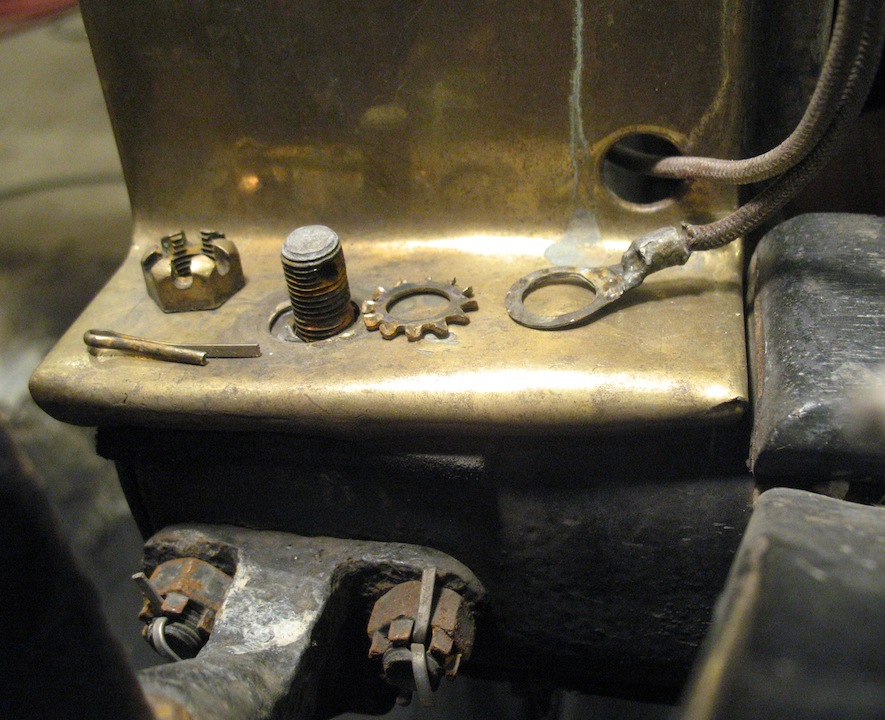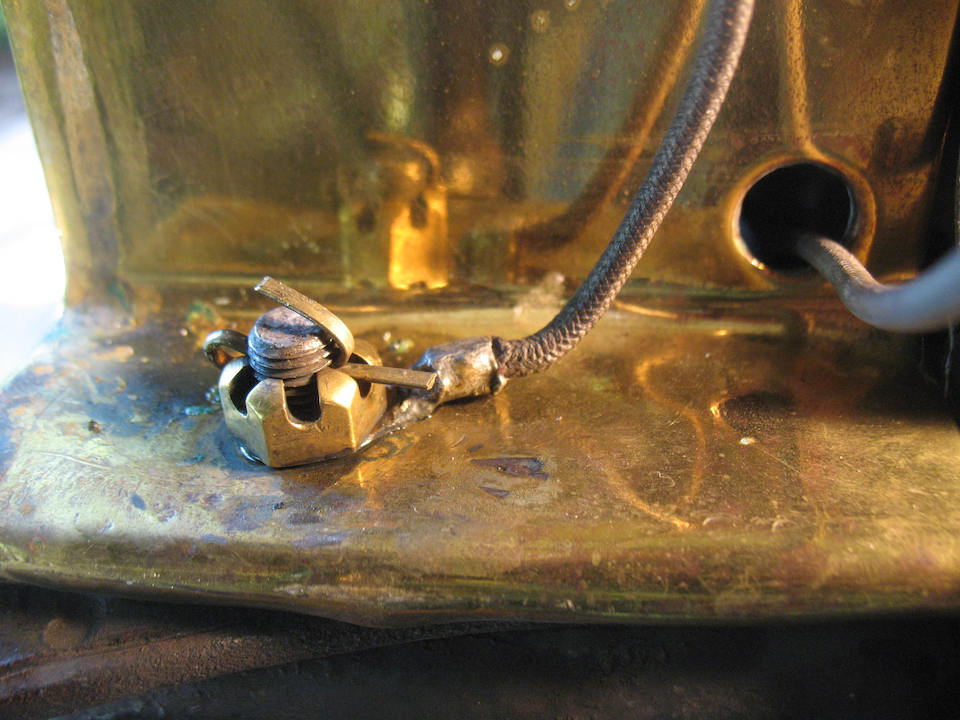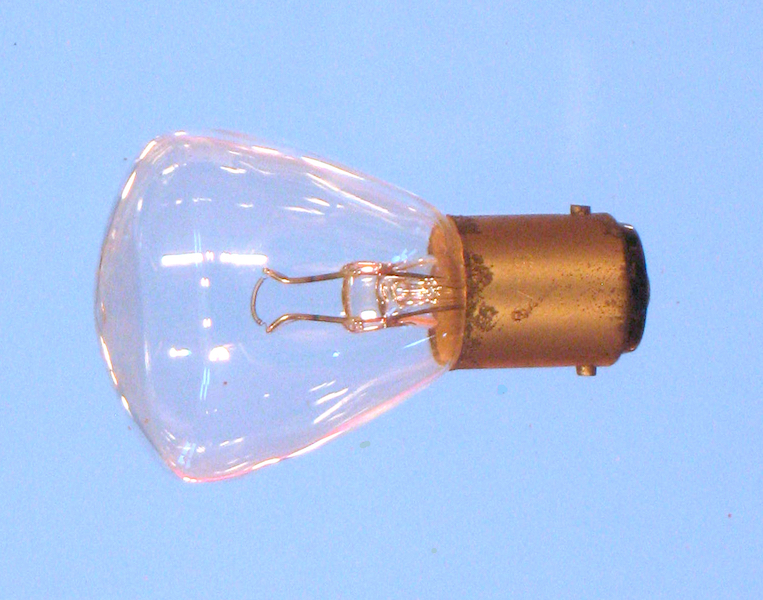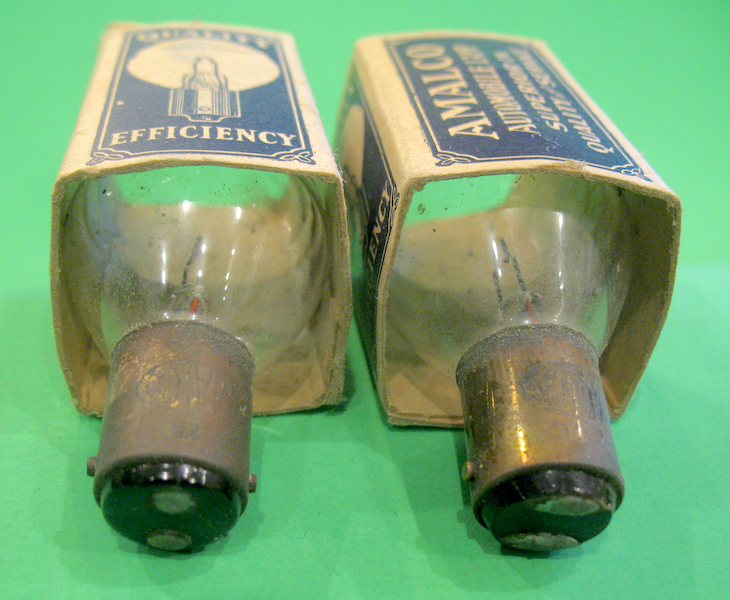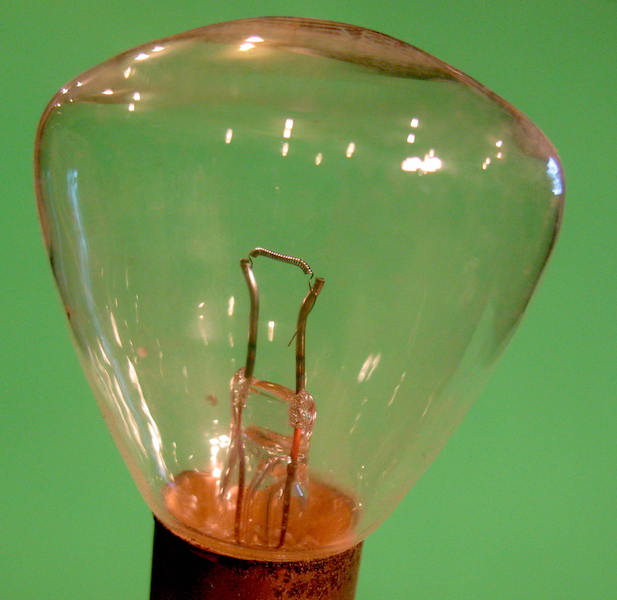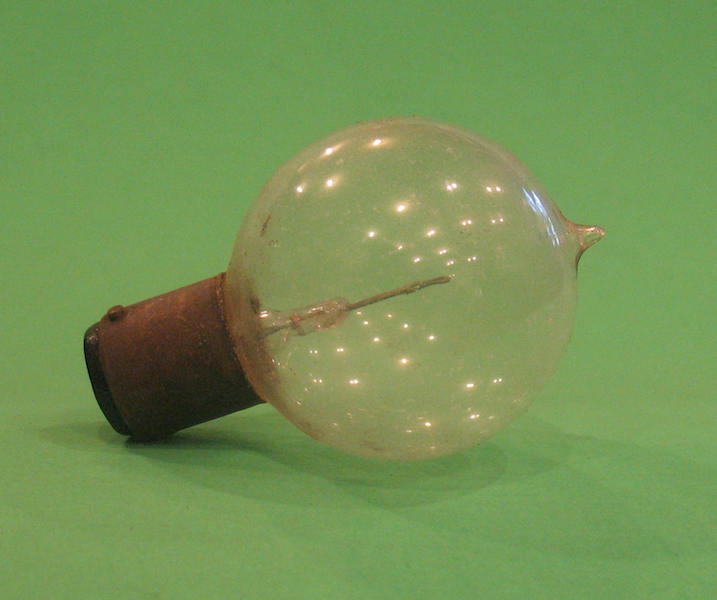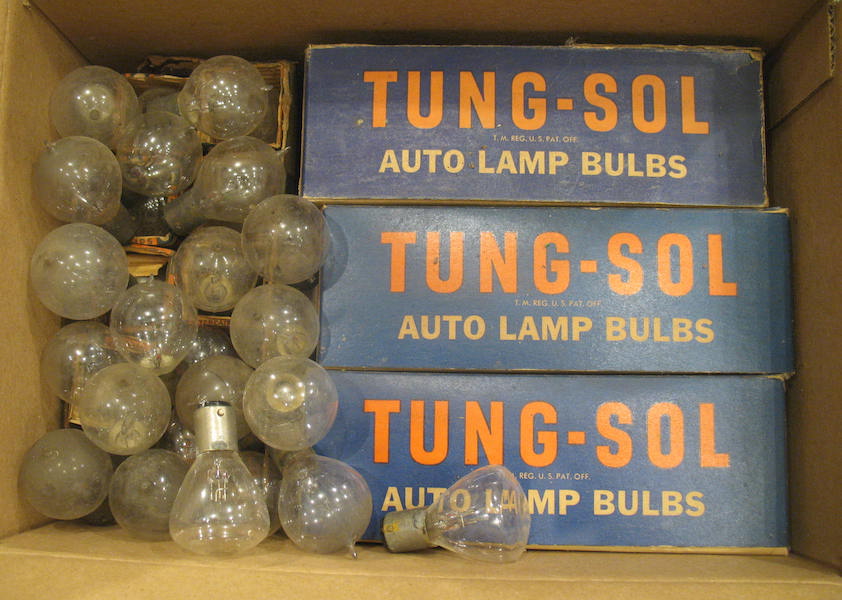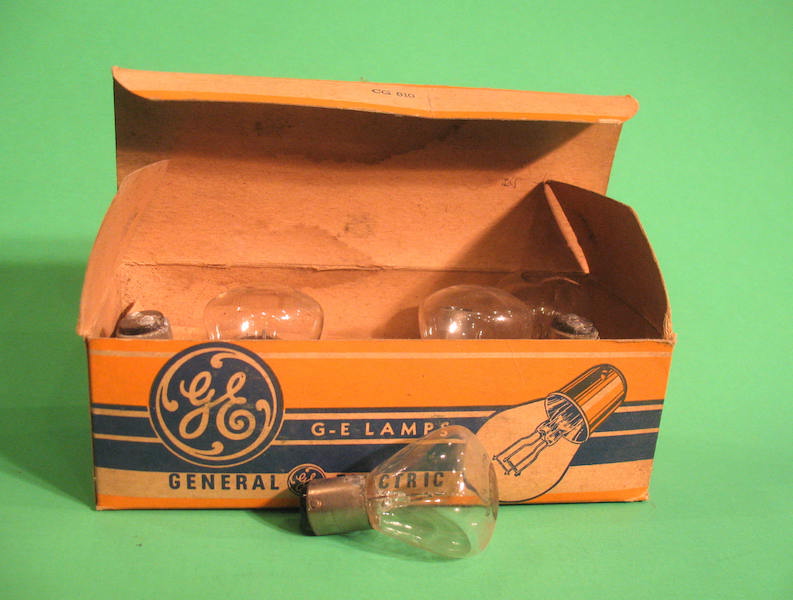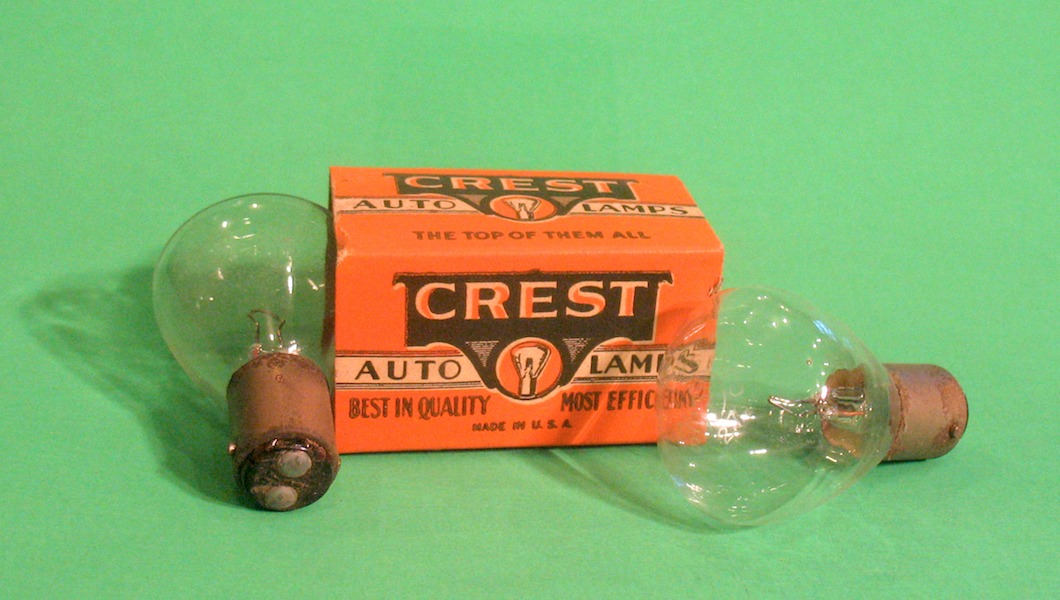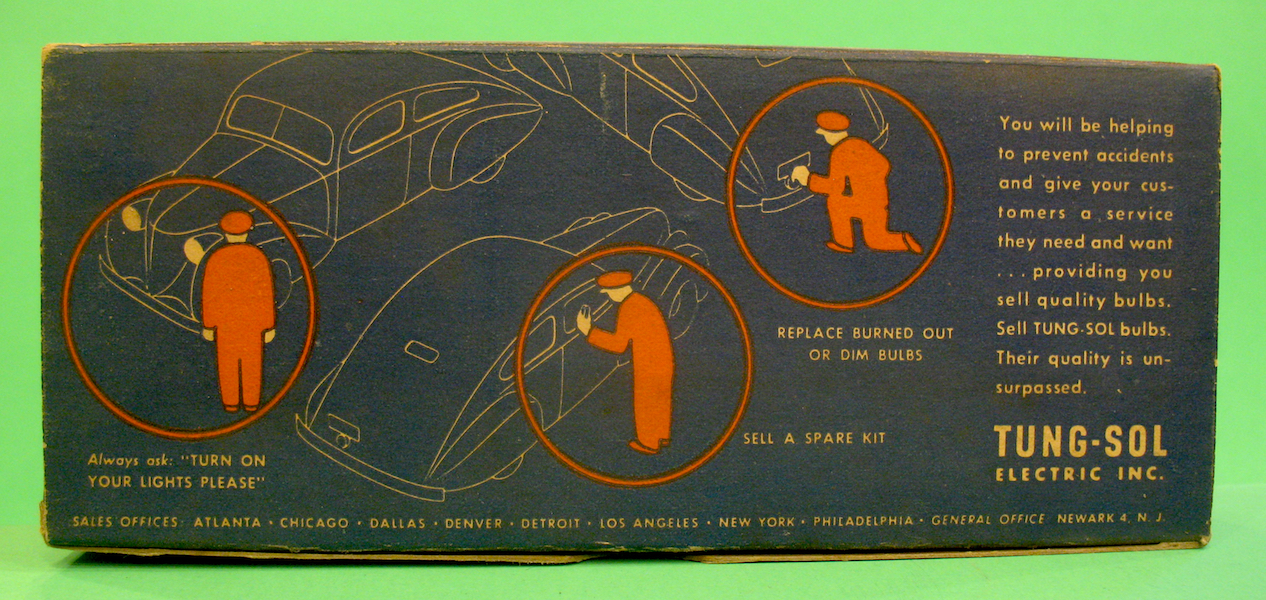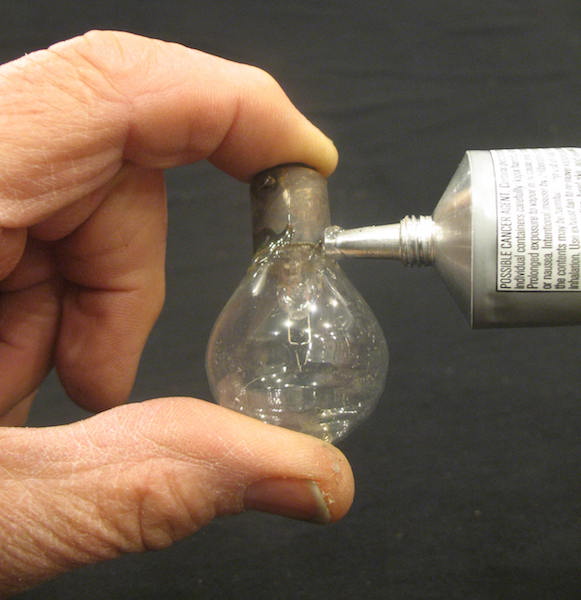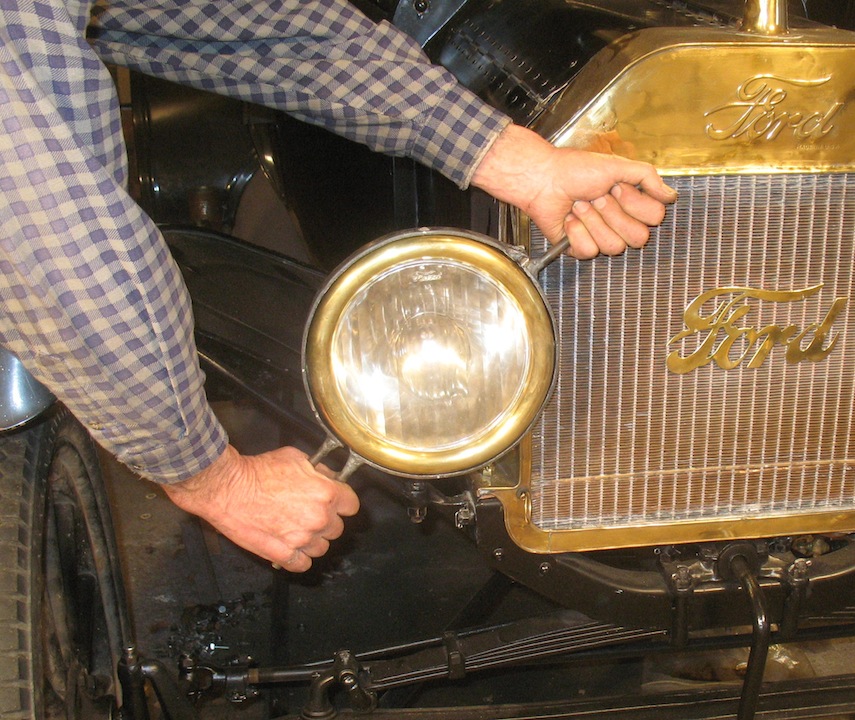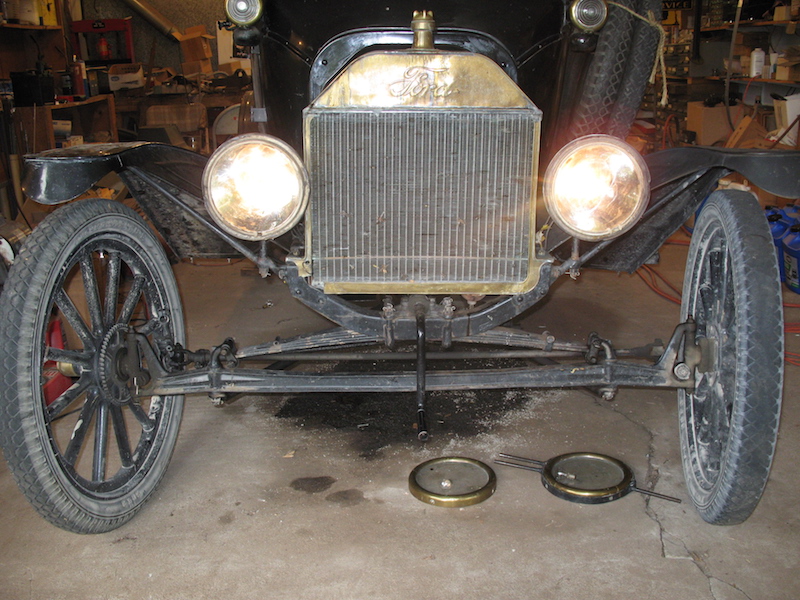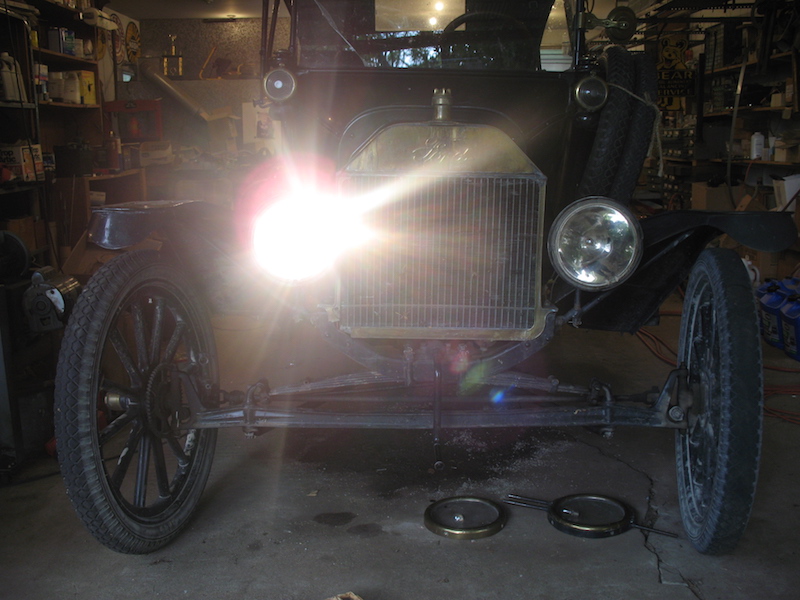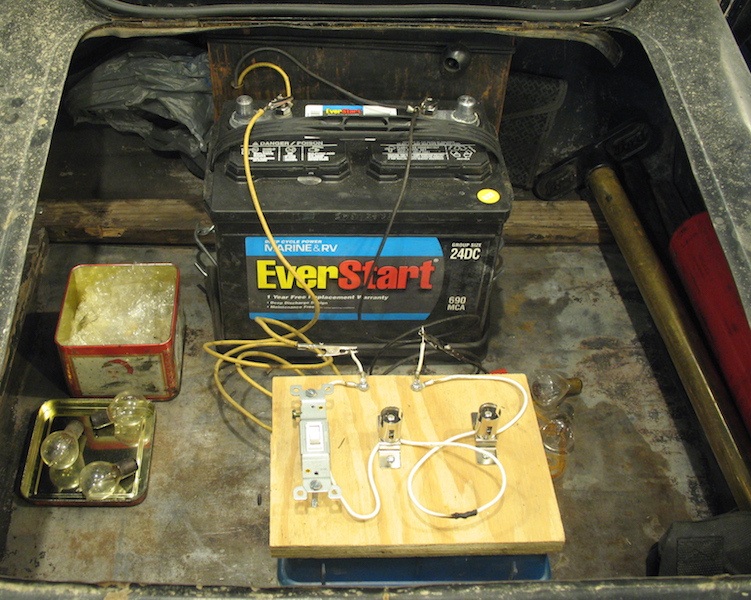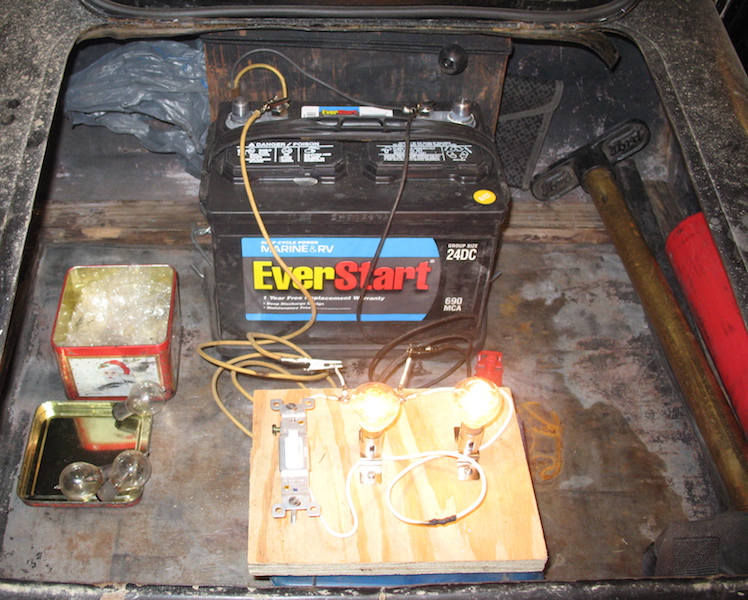
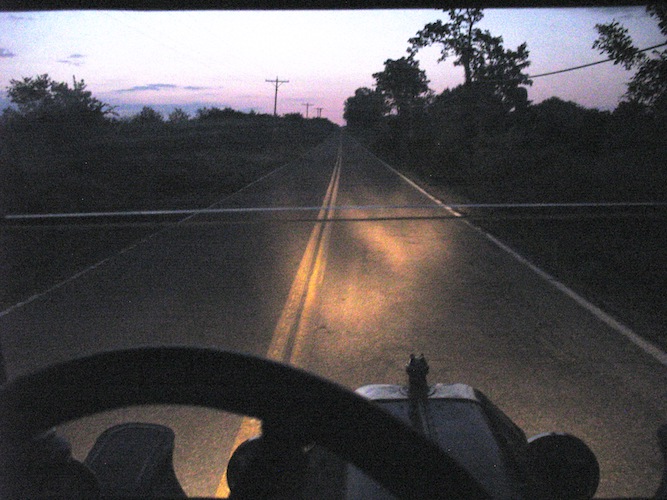
When Ford made the
change from gas headlights to electric on the 1915*
Model T's, the improvement was in ease of operation.
All you had to do to turn on the lights was push a
switch on the dash. But was the lighting any better?
Under the best of circumstances magneto lights are
marginally adequate. In town, with the help of street
lights, they are fine. On a familiar, straight country
road where the driver knows the way, they're sort of
adequate. On an unfamiliar, dark country road,
especially with curves, they're dangerous. Their
brightness depends on engine speed. At high speed
they're bright enough, but you outrun their limited
range. When you have to slow down for a turn, they go
dim. That doesn't mean slightly dim. It means you
can't see where you're going. I once had to drive on
an unfamiliar dark country road by magneto light. I
won't do it again.
*Mag lights were standard 1915-1918. Battery lights came with the electric starter in 1919.
*Mag lights were standard 1915-1918. Battery lights came with the electric starter in 1919.
